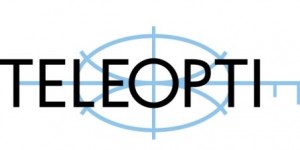Smarter Scheduling in Contact Centres – From virtual teams to car pooling, running a contact centre today is complicated business but it doesn’t have to be that way. Nick Brook at Teleopti reveals 7 ways workforce management solutions hold the key to smarter, flexible scheduling

At the same time, the astonishing number of factors that need to be considered to achieve all-round flexibility make running a contact centre today a complicated business.
Diminishing corporate budgets for example, are forcing organizations to think of more creative ways to pay for and deploy their staff. Pay-as-you-go arrangements in the form of zero-hour contracts, reduced and annualized working hours and other cost-containing measures such as Time Off Without Pay stand alongside traditional permanent or part-time agreements.
Businesses are also looking to reduce spending on expensive office space and IT overheads by moving to virtual teams or by introducing Bring Your Own Device (BYOD) programs. Furthermore, environmentally-minded organizations with a strong sense of Corporate Social Responsibility (CSR) or those who have simply re-located to rural areas to escape high City-centre rents are now facing the realities of poor public transport links and implementing car pooling schemes.
All these factors have a massive direct impact on contact centre operations, in particular agent scheduling. From fixed, split and micro-shifts to the rise of reserve working ie the scheduling technique that keeps up to 25% of the team on fluid shifts, means that bringing a team of full-time, part-time, contract and virtual agents together is a major challenge. So how can organizations achieve all-round flexibility in the contact center in a way that satisfies staff, customers and the business?
7 steps to smarter scheduling
Contact centre leaders should first establish the payment structures and types of shift that will motivate agents to meet customer service targets while lowering attrition rates and minimizing recruitment costs. After that, it comes down to releasing the top seven capabilities and benefits of today’s automated workforce management technology:
1. All-in-one, easy to use package – the biggest barrier to embracing new technology is ease-of-use or rather the lack of it. Fortunately, today’s fully automated solutions make light work of managing staff effectively, forecasting demand, creating schedules, developing accurate and insightful reports and improving overall customer satisfaction.
For example, when it comes to reserve working, there’s no need to re-design entire shifts and rotas every week. The flexibility of modern workforce optimization systems means you can schedule, in advance, the right number of reserve staff to match call demand and factor in sickness and training accurately. Transparency is an added bonus. At a glance, agents can see that everyone is taking turns to cover the most unpopular shifts! Then, add in an extra column to group people with the same start and finish times to help organise and communicate car sharing opportunities in a timely manner.
2. Easy access, anytime, anywhere – agents can log in from home or on the move to check their schedules, see who they are working with and let their manager know when they are available for work. Managers and resource teams are able to build efficient schedules at any time and from anywhere to gain complete control of their contact centre operations in a highly flexible way.
3. Intelligent resourcing – using historical data, resource teams have the power to predict how many agents they will need, the skills they require and pick and choose the right people at the click of a button. They can even support a number of different shift patterns including short shifts or split shifts rather than employ a set number of people at set times of the day.
4. Flexible planning ‘on the go’ – features such as real-time adherence monitor agent adherence to schedules. Automated alarms flag up when schedules are in danger of being breached and a real-time data feed, updated in seconds, enables fast decision-making. Intra-day scheduling allows small changes during the day while taking into account unplanned changes in customer demand and unplanned agent absences. For example managers can flexibly change break times and lunches or move people between skill groups, front office and back office work. The changes are often only by a few minutes but those small changes can make the difference between meeting service levels during peaks and losing valuable calls.
5. Fit for the future – the latest forecasting technology helps to right-size your contact center for the future. Running a series of ‘what if’ scenarios can predict staffing needs for regular seasonal fluctuations like Christmas, upcoming new marketing campaigns and even the organization’s long-term business plan.
6. Self-service – self-service capabilities empower agents to trade shifts, voice their preferences for overtime shifts and request time off. Setting up auto-approvals means staff don’t have to wait until the next day for an answer if management is not available – contact center flexibility and agent satisfaction in one fell swoop.
7. Time and cost efficiencies – the automation provided by workforce optimization technology combines strategic planning with instant fine-tuning throughout the day to create a highly flexible contact centre framework that keeps agents motivated, customers satisfied and CEOs happy.
Your countdown to flexible, smarter scheduling starts here. What are you waiting for?
Additional Information

Teleopti, is a global provider of workforce management (WFM) software, offering a WFM solution that is sophis¬ticated, localised and easy to use. As the largest “best-of-breed” vendor, Teleopti focuses on helping contact centres, back offices and retail stores improve customer service, employee satisfaction and profitability – through optimized, automated forecasting and scheduling.
Teleopti provides everything necessary to effectively manage staff, forecast demand, create schedules automatically, develop accurate and insightful reports and improve overall customer satisfaction.

For additional information on Teleopti visit their Website or view their Company Profile




